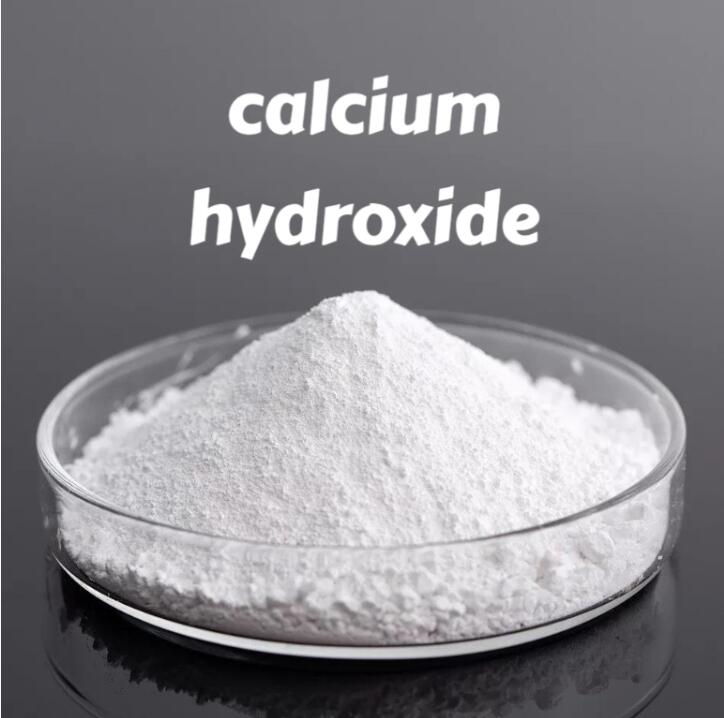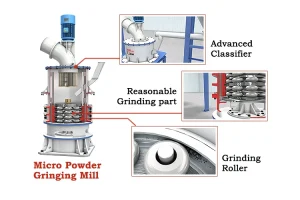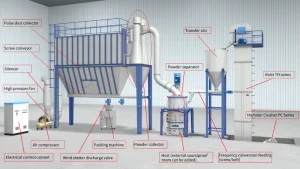The company's main products are HGM series micro pulverizer, superfine micro pulverizer, micro pulverizer, superfine pulverizer, pulverizer and matching hammer crusher, etc.
15/04/2024 admin

For processing calcium hydroxide into 400-600 mesh, HGM micro powder grinding mill is a suitable choice. This machine adopts advanced technology and has many advantages, such as high efficiency, low energy consumption, and environmental protection.
To achieve the desired fineness of 400-600 mesh, the grinding mill needs to be equipped with proper grinding rollers and rings, as well as a powerful motor to ensure smooth operation. Additionally, the feeding size and moisture content of the calcium hydroxide should be considered to optimize the grinding process and achieve the desired output.
1. High Efficiency
The HGM micro powder grinding mill utilizes a high-pressure spring mechanism and multi-level grinding rings to ensure efficient and precise grinding. This design helps in achieving the desired fineness with minimal energy consumption.
2. Adjustable Fineness
The fineness of the final product can be easily adjusted by changing the speed of the classifier wheel or adjusting the gap between the grinding rollers and rings. This flexibility allows for precise control over the particle size distribution.
3. Durable Construction
The grinding mill is built with durable materials to withstand the rigors of continuous operation. The grinding rollers and rings are made of high-quality steel, ensuring long-term reliability and performance.
4. Easy Maintenance
HGM micro powder grinding mill is designed for easy maintenance and servicing. It features a simple and accessible layout, allowing for quick access to key components for cleaning and inspection.
5. Environmental Friendliness
The grinding mill is equipped with advanced dust collection systems to minimize emissions and ensure a clean working environment. This makes it suitable for use in various industrial applications while adhering to environmental regulations.
6. Wide Range of Applications
In addition to calcium hydroxide, HGM micro powder grinding mill can process a variety of materials, including limestone, gypsum, dolomite, talc, and more. Its versatility makes it a popular choice across different industries.
7. Stable Performance
The HGM micro powder grinding mill is equipped with a high-quality motor and precision transmission system, ensuring stable performance even under heavy loads. This stability is crucial for continuous operation and consistent output quality.
8. Versatile Grinding Modes
This grinding mill offers various grinding modes, including dry grinding, wet grinding, and cryogenic grinding, allowing users to choose the most suitable mode based on the characteristics of the material and the desired final product properties.
9. Advanced Control System
HGM micro powder grinding mill comes with an advanced control system that allows operators to monitor and adjust various parameters, such as grinding pressure, feed rate, and airflow, in real-time. This level of control enables precise optimization of the grinding process for maximum efficiency and product quality.
10. Compact Design
Despite its powerful capabilities, HGM micro powder grinding mill features a compact and space-saving design, making it suitable for installation in both large-scale production facilities and smaller workshop environments.
11. Customization Options
Depending on specific application requirements, the HGM micro powder grinding mill can be customized with additional features, such as temperature control systems, vibration dampening mechanisms, and special wear-resistant coatings, to enhance performance and longevity.
12. Reliable After-Sales Support
The manufacturer of HGM micro powder grinding mill typically provides comprehensive after-sales support, including installation assistance, technical training, and prompt spare parts availability, ensuring smooth operation and minimal downtime for end-users.
To process calcium hydroxide into 400-600 mesh using the HGM micro powder grinding mill, you would typically follow these steps:
By following these steps and optimizing the operation of the HGM micro powder grinding mill, you can efficiently process calcium hydroxide into the desired 400-600 mesh range with high precision and consistency.
The HGM micro powder grinding mill consists of several key components, each playing a crucial role in the grinding process. Here’s an overview of its main structures and working principle:


Calcium hydroxide, with its fine particle size typically in the range of 400-600 mesh, finds various applications across different industries due to its unique properties.
| Construction Industry | Mortar Production: Calcium hydroxide is often used in the preparation of mortar, where it acts as a binding agent when mixed with water and aggregates like sand and cement. It helps in enhancing the workability and durability of the mortar. Stabilization of Soil: Calcium hydroxide is used to stabilize soil in construction projects. When mixed with clayey soil, it improves its mechanical properties, such as strength and load-bearing capacity, making it suitable for construction purposes. |
| Water Treatment | pH Adjustment: Calcium hydroxide is commonly used in water treatment processes to adjust the pH of acidic water. It acts as a neutralizing agent, helping to raise the pH level and reduce acidity, thus preventing corrosion in pipelines and equipment. |
| Agriculture | Soil Amendment: Calcium hydroxide, also known as hydrated lime, is applied to agricultural soils to adjust pH levels and reduce soil acidity. It helps to improve soil structure, enhance nutrient availability, and promote healthier plant growth. Livestock Feed Additive: Calcium hydroxide is used as a feed additive for livestock, particularly poultry, to provide supplemental calcium and improve eggshell quality. It also acts as a buffering agent in the digestive system, helping to maintain optimal pH levels and improve nutrient absorption. |
| Chemical Industry | Manufacturing of Chemicals: Calcium hydroxide serves as a precursor in the synthesis of various chemicals, including calcium salts, calcium stearate, and calcium carbonate. These chemicals are used in industries such as pharmaceuticals, food processing, and manufacturing. Desulfurization: In industrial processes such as flue gas desulfurization (FGD), calcium hydroxide is utilized to remove sulfur dioxide (SO2) from exhaust gases. It reacts with SO2 to form calcium sulfite or calcium sulfate, which can be easily separated from the gas stream. |
| Food Industry | Food Additive: Calcium hydroxide is approved as a food additive (E526) and is used in food processing for various purposes, such as as a pH regulator, firming agent, and preservative. It is commonly added to products like canned vegetables, pickles, and tortillas. |
These are just a few examples of the diverse applications of 400-600 mesh calcium hydroxide, highlighting its importance across industries ranging from construction and water treatment to agriculture and food processing.
If you have some questions about our products, please feel free to fill out the form below, and we will contact you within 24 hours.